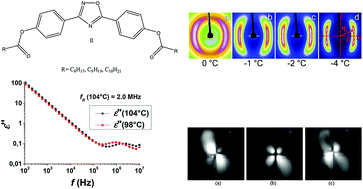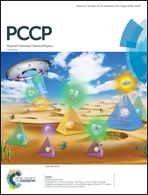Short bent-core molecules: X-ray, polarization, dielectricity, texture and electro-optics investigations
Abstract
Bent-core liquid crystals based on 1,2,4-oxadiazole as a central unit have been the first mesogens to exhibit a ferroelectric response in the nematic phase. This behavior has been widely recognized as due to the presence of smectic-like polar cybotactic clusters permeating the nematic phase. Unfortunately, these compounds exhibited rather high melting points, about 120 °C, due to the presence of four benzene rings in the molecules. Here we describe the synthesis and physical characterization of a new series of BC mesogens, featuring the same bent core as the previous compounds but shorter outer substituents. By keeping only two benzene rings, we were able to lower the melting points to about 70 °C. However, while X-ray diffraction and dielectric spectroscopy measurements confirm the cybotactic nature of the nematic phase of these compounds, polarization and electro-optical measurements ascribe their polar response to flexoelectricity rather than to spontaneous polarization. Finally, texture investigation suggests the biaxiality of the nematic phase, which is indicated also by conoscopic measurements. These results are important for recognizing size and rigidity limitations in designing bent-core liquid crystal molecules suitable for applications.



 Please wait while we load your content...
Please wait while we load your content...